Following the publication of my YouTube video and newsletter entitled “How was Nan Madol built?” I was sent a link to the a document from a Central Intelligence Agency (CIA) freedom of information request. Shortly after the link was sent to me, it became unavailable on the CIA’s website, however I was able to recover it and I spent a day meticulously re-constructing it and producing a read through of it.
It is particularly interesting in several areas that I will explore in another article, however, it was sent because it said that in ‘mind over matter’ driven ‘spoon bending’, when the affected metal was analysed, it appeared as if something had happened at the metal crystal boundaries that enabled the metal to become malleable. This is entirely in line with the my observations of EVOs/coherent matter effects in Hutchison samples and also the descriptions of Takaaki Matsumoto in Cold Fusion experiments from the early 1990s. This formed part of my argument on how Nan Madol was built and I am of the belief that this Psychokinesis process is intimately related.
Approved For Release 2001/03/07: _CIA-RDP96-00789R003000020007-0
PK PARTY HISTORY
by Jack Houck
December 19, 1983
A PK Party is defined as a group of 15 or more people who meet to bend metal using psychokinesis (PK) or mind over matter. The first PK Party was held in January 1981. The objective was to assemble a group of people and create a "peak emotional experience" (Reference 1). The author postulated that, at the time of the peak emotional event, the mind could make a connection with an object and affected that object, (i.e., psychokinesis). The first PK Party was planned to be a test of this idea.
The week before the first PK Party, the author met Severin Dahlen, a metallurgist who had been involved with PK research at the University of California, Irvine. Together, a plan for the party was prepared. Twenty-one people gathered at the author's home on Monday evening, January 19, 1981. All were friends of the author and came from varied backgrounds. After introductions and general discussion, everyone was relaxed and comfortable. The author's grandparents' silverplated silverware was passed out and everyone had either a fork or spoon. Severin stood in the middle of the room with everyone seated in a circle and gave the following instructions:
“Get a point of concentration in your head.”
“Make it very intense and focused.”
“Grab it and bring it down through your neck, down through your shoulder, down through your arm, through your hand, and put it into the silverware at the point you intend to bend it.”
“Command it to bend!”
“Release the command and let it happen.”
He then instructed the group to use their fingers to test for warmth coming out of the silverware or to feel the metal surface become sticky. Everyone felt pretty silly, sitting there holding the silverware, until the head of a fork being held by a boy (age 14) bent over all by itself I Almost everyone in the room saw this happen and experienced an instantaneous belief system change. Then the silverware in the hands of many people in the room became soft. They easily bent and twisted the silverware into unusual shapes. The period during which the metal remained soft was between five and twenty seconds. Everyone was shouting and extremely excited. During the next, hour, nineteen of the party attendees had the metal getting soft and being easily formed into any shape. Later we termed this "warm forming". Also, during the first party, the same boy put a 270-degree bend in a 5/16-inch diameter steel rod. This was very impressive because of the apparent ease with which it was done. One of the two party attendees who “did not bend” was a lady who had told a friend before the party that she did not see any sense in bending silverware.
At the end of the party, she asked why she could not do it. The author was the other unsuccessful bender at that first party. He was so busy analyzing what was going on, that concentration on the task of bending had been difficult.
The second PK party was held a month later. This time a number of specimens of different metals, as well as metals made with different manufacturing processes were available to the benders. The attendees learned and practiced with silverware. Then they were asked to bend these other specimens. Hacksaw blades were shaped into spirals, brass strips bent in sealed bottles, spoon bowls were buckled, and many steel rods were bent. No one was able to bend the copper rods. Instead, some copper rods became so hot that the people dropped them to keep from being burned. Over 8.5% of the attendees succeeded in experiencing warm forming. The people who were having this experience realized that they were doing something that most of them thought was impossible. Two characteristics of metal possibly related to PK are the number of dislocations and the thermal conductivity. The more dislocations available in the metal induced, for example, by cold working, the easier it is to bend. The lower the conductivity, the easier it is to find the short period during which the metal is soft. Forged stainless steel silverware has been cold worked and has a low thermal conductivity.
Twelve PK Parties were held during 1981. The format was continually improved. The attendees were taught how to use dowsing rods as a means of “testing” the silverware to see if "it was willing to bend". This seems to reinforce the essential belief structure. As with warm forming, most people succeed in using a dowsing rod on their first try. It is also a useful method for helping to connect the individual mind to the object to be bent. A special feature was added at the end of the parties. The participants held two forks at the very bottom of the handle and were asked not to apply force with their other hand. Sometimes significant bending occurred. Shouting at the silverware has also been added as a means of helping to enhance the emotional level in a group. This procedure adds to the intensity of the command to bend and helps create pandemonium throughout the party, in order to help break people's concentration (thus assisting the release or "letting go" step).
The second year saw 24 parties orchestrated by the author. In the spring of 1982, Fran Zeff Brown ran a PK Party for her parapsychology class in Orange County, California., and achieved the same high success rate. This was the first replication of the PK Party format. The author gave two PK Parties in the Washington D.C. area, in May and June of 1982. Some of the attendees of those parties began to run their own PK Parties with very high success rates. For example, John Alexander has now held more than 50 parties. Figure 1 shows the number of people attending the author’s PK Parties, as well as an estimate of the total number of people attending PK Parties, based on feedback provided by the many people running their own parties. In the third year, the number of parties run by the author has been averaging three per month, and they generally have more people per party. The largest party was held in Vancouver B.C., Canada, in September 1983, with over 400 attendees.
The success rate seems to drop in the bigger parties. This is shown in Figure 2, wherein the success rate is plotted as a function of the number of people attending a party. It appears that the best party size is between 15 and 40 participants. One reason for the lower success rate at the big parties may be that people do not get enough personal attention. About 50% of the people report, experiencing, warm forming using the basic instructions given earlier. The rest seem to need some personal attention from the person giving the party or from a helper. Also, at the big parties. a few people go around creating some negative attitudes. The more helpers, the easier it is to prevent the critics and analytical types from interfering with those who want to experience the warm forming, as well as to provide more individual attention. If there were one helper per 20 people, the expected success rate would be between 80 and 100%, even at the larger parties.
The success rate was unusually low at a few parties. One of those was at the 1983 Parapsychological Association Conference. The attendees might have been so busy analyzing what was going on that they either did not want to or could not experience PK themselves. Another low-success-rate party was at Los Alamos, New Mexico. Nine PhD physicists, along with their wives and children, attended the party. The wives and children did very well, but the men seemed to have difficulty. Part of their problem might have been their analytical nature; possibly more importantly, they all worked closely together in a relatively closed society and doing something as "unusual" as a PK Party was subconsciously "not permitted.” In general, parties are the most successful when there are some children, the people are open-minded, and they enjoy having fun with a new and unusual experience. A few times, the author has given a party starting late in the evening after an all-day conference. The people are mentally and physically exhausted, which makes it difficult to get them all whipped up for a peak emotional event.
In the early days of the PK Parties, it was very difficult to get a high success rate with a small group of people. This seems to be changing in both the author’s experience and for those other individuals who have been running PK Parties. Some are suggesting that the ideas of the morphogenetic field theory (Reference 2) may be taking effect (the more a new phenomenon occurs, the easier it is to create).
The only new feature added to the PK Parties in 1983 was seed sprouting. Eldon Byrd had seen Uri Geller do this in Japan in the spring. He suggested to the author that it be tried as a part of a PK Party. On July 29, 1983, soybean seeds were put in water at the beginning of the party. Near the end of the party, a few of these beans were placed in the open hands of the participants. Much to everyone's amazement, about half of the beans seemed to pop open and a few seemed to have grown a small sprout. This has been tried at four of the author’s PK Parties with similar results. There is not enough data or controlled experiments at this time to postulate what might be happening in or around the seeds.
In searching for an explanation for what is physically happening in the metal, we have tried a number of different experiments. One of these was a "hacksaw experiment" (Reference 3). In this experiment, four hacksaw blades were purchased. One was kept away from the others as a control and the other three were exposed at four PK Parties during a three-month period. Only Severin Dahlen and the author knew that these hacksaw blades were in a paper bag on the floor in the center of the participant circle at the parties. The hardness of all three exposed blades was reduced dramatically and there was no change in the hardness of the control blade. Many of the other experiments exhibited a general softening of metals after PK exposure. Also, clear plastic exhibited apparent heating in one example examined with a scanning electron microscope.
Interestingly, the observed local effects are not always the same. Most of the time, the person doing the warm forming reports feeling the silverware or other object become warm as if heat were coming from the inside of the object. It is postulated that, somehow, the mind is creating the conditions for energy, of unknown form, to be deposited along the grain boundaries of the metal. The dislocations may somehow act as transducers to receive this energy, possibly from some other dimension, as shown pictorially in Figure 3. The "STU" (Space Time Unit) is the author’s way of describing an information system which stores all information in space and time (Reference 1). In this representation, the STU also serves the function of converting the individual's goal of the desire to bend into action. Whatever the form of the energy as it is transduced into the metal grain boundaries, it is then partially converted to heat. This is the same conversion that occurs with a microwave oven, in that the electromagnetic energy is converted to heat when it is attenuated by the meat. In the metal, the grain boundaries become very hot, possibly even molten. When a large portion of the metal has soft grain boundaries, the grains are free to slip or float and the metal temporarily loses its rigidity. This only happens for several seconds, because the heat is conducted away from the grain boundaries and they re-solidify. Often, people feel this sudden hardening of the metal while they are easily forming it. Sometimes the metal becomes so hot internally that gas is formed, which is believed to be the source of the loud "pop" often heard when an object being warm formed breaks. Twice the plating of silverplated forks has split apart by itself with loud pops when being held by only one hand. Metal that has been annealed or cast is very difficult to warm form. This further supports the idea that the dislocations play a role in the process of concentrating the thermal energy into the grain boundaries. In spite of a large amount of data suggesting that the above process is what is happening in the metal most of the time, how the mind or subconscious converts the goal into thermal energy along the grain boundaries remains a mystery.
A small percent of the time, both the object and the air around it become very cold. Once, water was observed to condense on a fork. In these cases, it is thought. that the thermal energy is being drawn from the local air in an attempt to achieve the goal - to BEND! This type of temperature drop is commonly reported in poltergeist cases (Reference 4). Nothing is known about the algorithms the mind uses to select the best method for accomplishing the individual's goal. Sometimes, but infrequently, it is noticed that an individual has gotten into a trance-like state and uses extreme physical force to bend an object. Often, this person is unaware of how much physical force he used, thinking that he was only pushing a little bit. The mind may have selected to use that individuals own strength, if his conscious mind could be circumvented. It is analogous to the mind selecting the minimum energy solution to a given problem. These multiple options from which the mind seems to select are pictorially shown in Figure 4.
In the spring of 1983, Cynthia Siegel, a graduate student at the John F. Kennedy University in Orinda, California, did a survey of the first 800 people to attend Houcks’ PK Parties (Reference 5). Of the three hundred and eleven people who returned her questionnaire, 72% believed that they experienced warm forming. Interestingly, her survey showed that a very high percentage of the people attending PK Parties now believed that PK really works, even those who did not have their own direct experience. For example, many saw forks bending by themselves without the assistance of another hand or a magician. It had been the author’s opinion that, people would not be convinced that PK works unless they experienced it for themselves.
About 50% of the people who have experienced warm forming during a PK Party can then do it by themselves after the party. They can not always do it on command, but, once their own belief system is convinced it works, they do not need the excitement and support of the PK Party environment to perform PK.
A summary of the current PK Party format is provided below:
A good PK Party consists of fifteen to forty open-minded, fun-loving, and relaxed people, including children over five years old.
Anyone who is willing to describe the PK Party format and is confident that it will work can run a party.
An adequate supply of material is necessary (typically, four or five pieces of silverware per person and some heavier material), such as several sizes of steel rods, brittle hacksaw blades, drill bits, and clear plastic silverware.
The act of dowsing the silverware with either dowsing rods or pendulums are fun and gives people a break after the introduction.
The group attention and concentration are focused using the instructions given at the beginning of this paper. It is good to have the group shout the command "BEND' three times at the silverware that they are going to bend. They are also encouraged to repeat the command throughout the party. To help with the release of that initial concentration, people are encouraged to jump up or scream that theirs is bending, so that others can observe. This not only helps the other people witness bending (helping to adjust their belief system), but, most importantly, it breaks their concentration on their own bending. This break in attention somehow releases the mind to go and organize the method for achieving that person's goal, presumably to experience warm forming.
During this first phase, people utilize their fingers to sense the moment when the silverware becomes warm or sticky. At that time, they are encouraged to use a little force to get the bending started. Most people feel that they apply between 30 and 50% of the force that would have been required to physically bend the silverware. This phase is called "kindergarten" bending. It is not interesting scientifically, because the people are encouraged to use two hands on everyday stainless-steel flatware. Nevertheless, the people themselves have a lot of fun with this phase and sometimes bend up many pieces of silverware. Figure 5 is an example of a happy lady with examples to show her friends and boss.
Once people graduate from “kindergarten”, they are encouraged to bend some of the heavy-duty objects. The most impressive objects that the author has seen bent to date are half-inch steel bars, 18 inches long. Figure 6 shows a young girl who buckled the bowl of a silverplated tablespoon. This phase is called “elementary” or “high school” bending.
At the “college” level, people spend ten to fifteen minutes attempting to sprout seeds in their open hands. Typically, soy and mung bean seeds are put in water at the beginning of the party. They are passed around near the end of a party and all together the group commands them to "SPROUT". Some seeds make a popping sound and appear to move and open up. Sometimes they also appear to produce a small sprout. One control experiment was conducted with no similar results, suggesting that something unusual was going on at the PK Parties. Attempts will be made in the future to better understand how the seeds are being affected.
"Graduate school" is at the end of a party, wherein everyone is given one or two dinner forks, depending on their availability. The forks are held at the very bottom and people are asked not to push on them with the other hand. All together, the group commands them to “BEND” and then relaxes and watches each other's forks. Often the tines deform and, in many cases, the whole head of the fork bends over to some degree. This, of course, is impressive to those who thought they were using too much force during the “kindergarten” bending. Figure 7 shows a man who had been concentrating intently on the fork in his right hand. The author noticed the fork in his left hand slowly bending over. I said to him, "Did you see the fork in your left hand?" He looked at it and asked, “How did that happen?” At that moment, the fork in his right hand bent over. This is only one of many examples wherein the PK event happens when the mind is released. Possibly, the reason children are so good at PK is that they do not have a long concentration span
At the end of a PK Party, the leader summarizes the implications of everyone having this ability and its use for bettering their lives. Pictures are taken and questionnaires are then filled out for the record. Some groups have been recording the parties on video tape, which does not seem to bother the party attendees. These tapes are valuable for review of experimental results when experiments are being conducted within the party, review of party results and procedures, and to enhance public verifiability to some degree.
In conclusion, there is no sense in a group of people getting together just to bend up silverware. However, many people who experience warm forming begin to discover that they can control their environment, their health, and their future. Often, many weeks after someone has participated in a party, he finds an occasion to use PK and has reported elation about how "it really works" Thus, PK Parties have turned out to be a tremendous teaching tool. The identical process can be used for healing oneself and others. The parties have also been useful in getting the attention of intelligent people. They recognize that our current scientific paradigm does not have an explanation of how PK works. Some are interested in conducting research to improve our understanding of this phenomenon. The author continues to orchestrate PK Parties, because (1) new things are observed all the time, (2) the understanding of the phenomena continues to improve, and (3) many people are helped in many different ways. Cynthia Siegel, as previously mentioned, wrote a paper on The Effect of PK Parties on Indivuduals and Society (Reference 6). She had interviewed a number of individuals who had hosted PK Parties. They envision some tremendous benefits to individuals and society, as a result of PK Parties. As the number of people attending PK Parties continues to increase, so will the recognition that everyone in the world is interconnected and, if we could all work together, it, would be a more peaceful planet.
REFERENCES
Jack Houck, Conceptual Model of Paranormal Phenomena, September 21, 1982 (available from author at 16892 Canyon Ln., Huntington Beach, Ca., 92649)
Rupert Sheldrake, A New Science of Life: The Hypothesis of Formative Causation, J. P. Tarcher, Inc., 1981
Severin Dahlen, Remote Annealing of High Carbon Steel Parts, General Material Genetics Institute, November 1982 (available from Jack Houck)
D. Scott Rogo, The Poltergeist Experience, Viking/Penguin, 1979
Cynthia Siegel, Experiences and Changes in Belief Among Party Participants, Thesis for Master of Science in Parapsychology at John F. Kennedy University, December 1983
Cynthia Siegel, The Effect of PK Parties on lndividuals and Society, Paradigms of Science Class, John F. Kennedy University, Spring 1983 (available from Jack Houck)




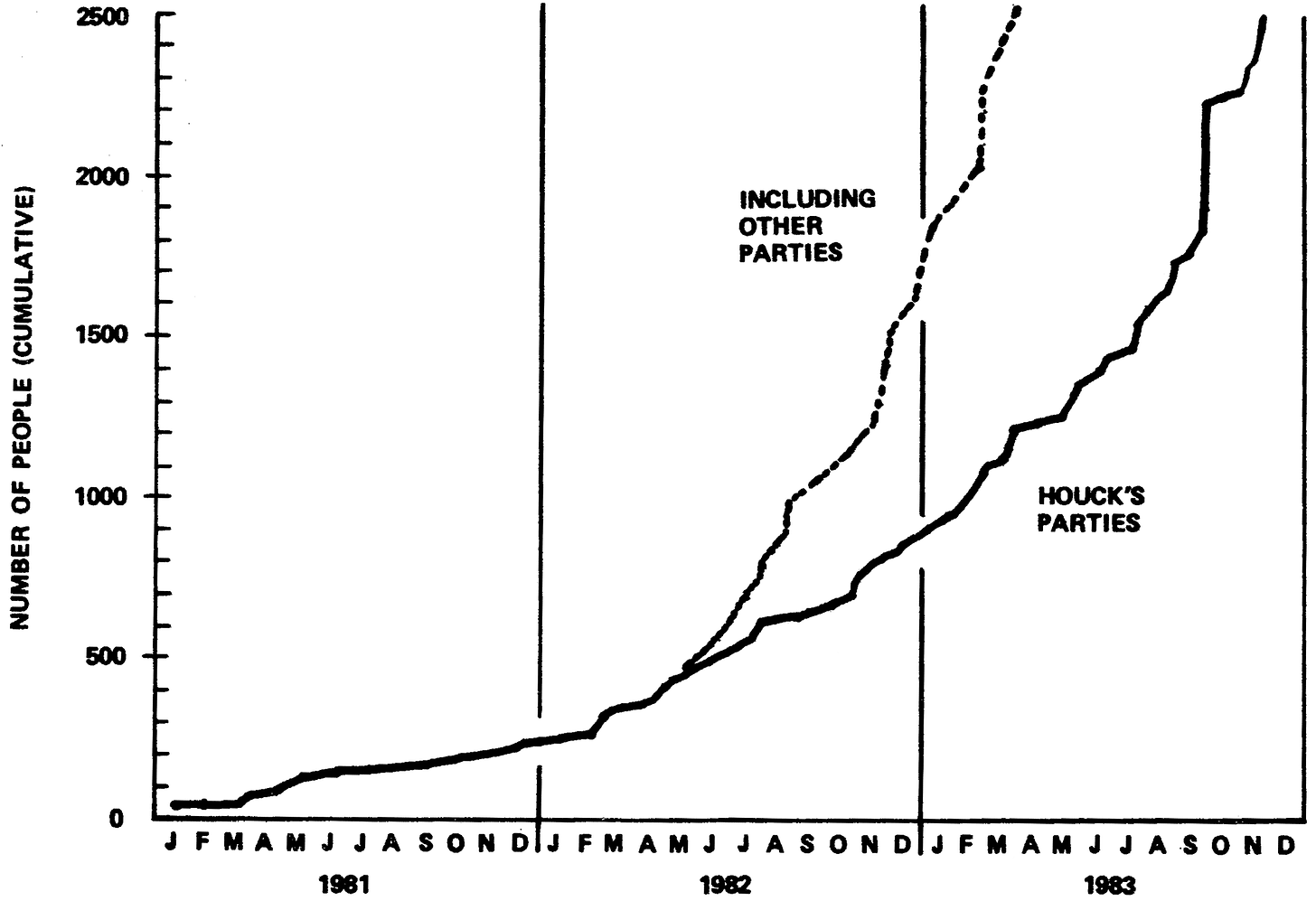
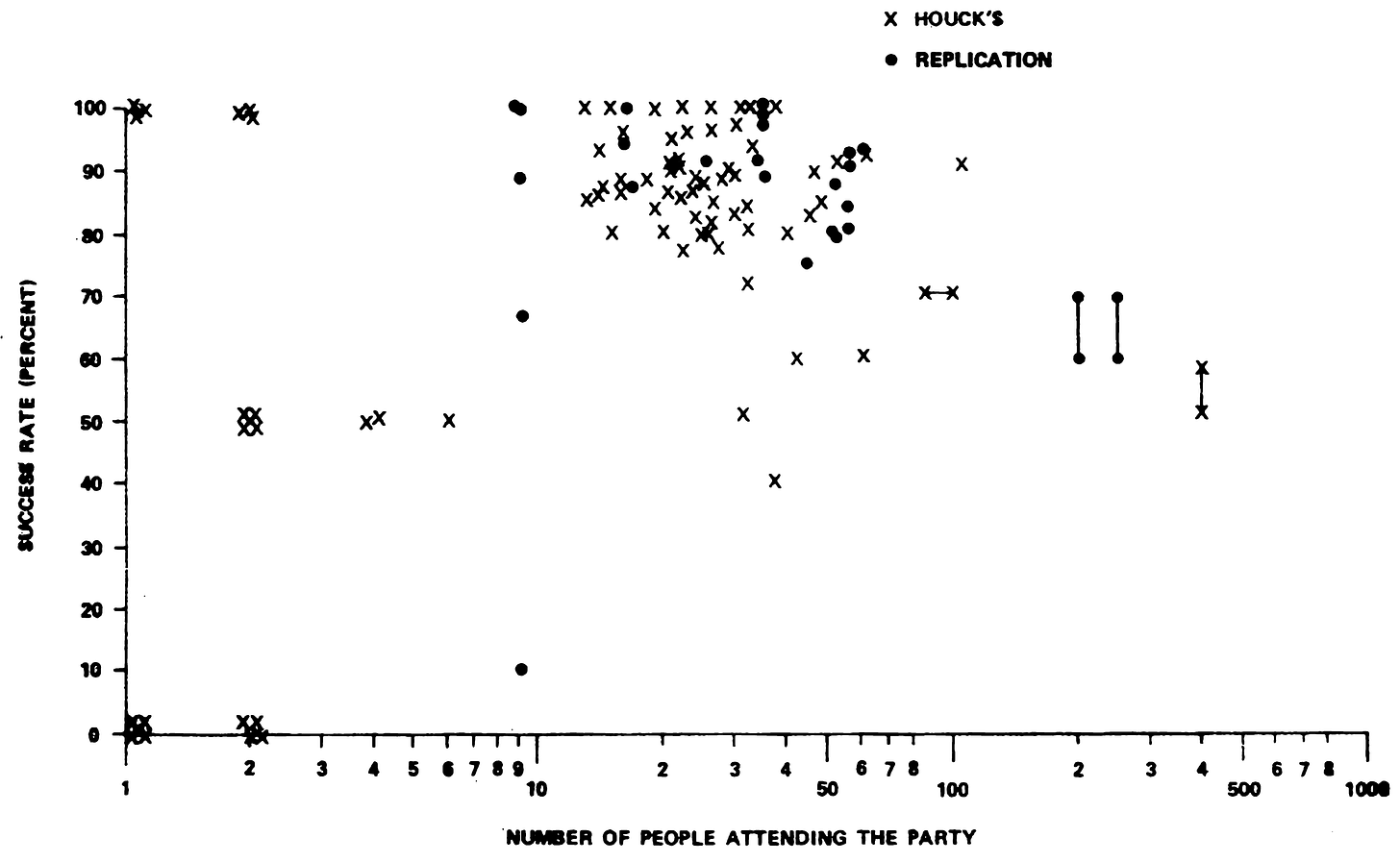
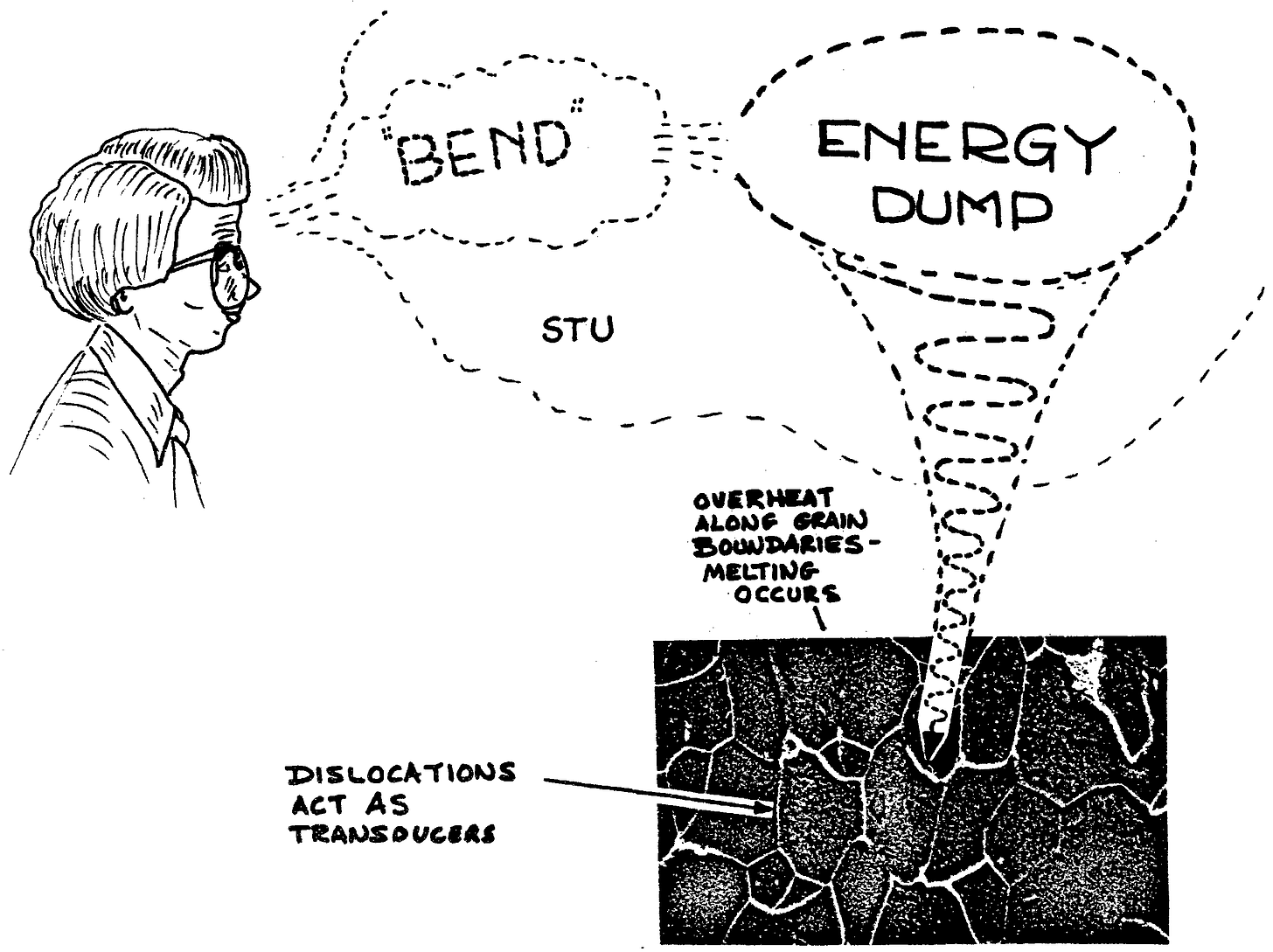
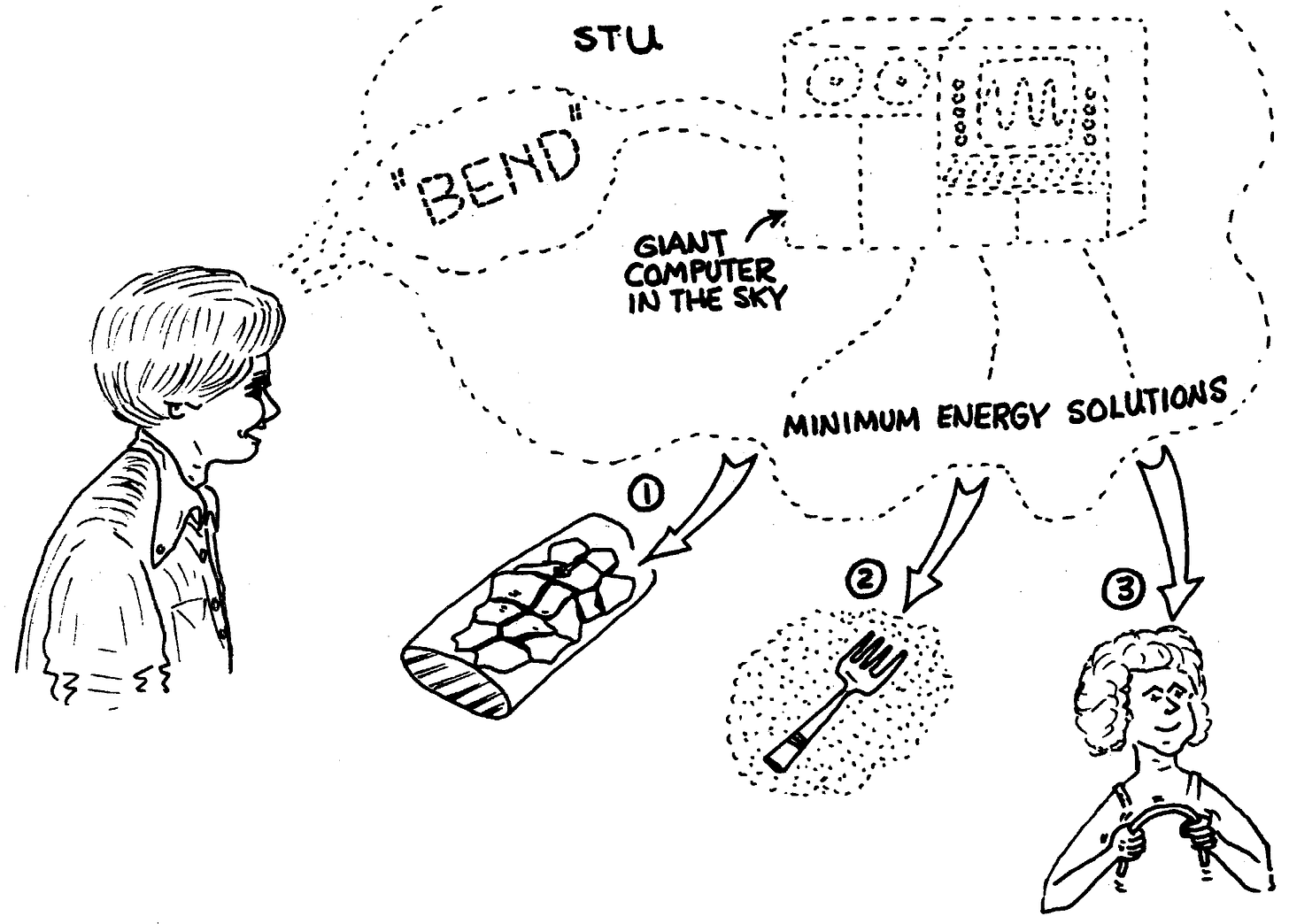
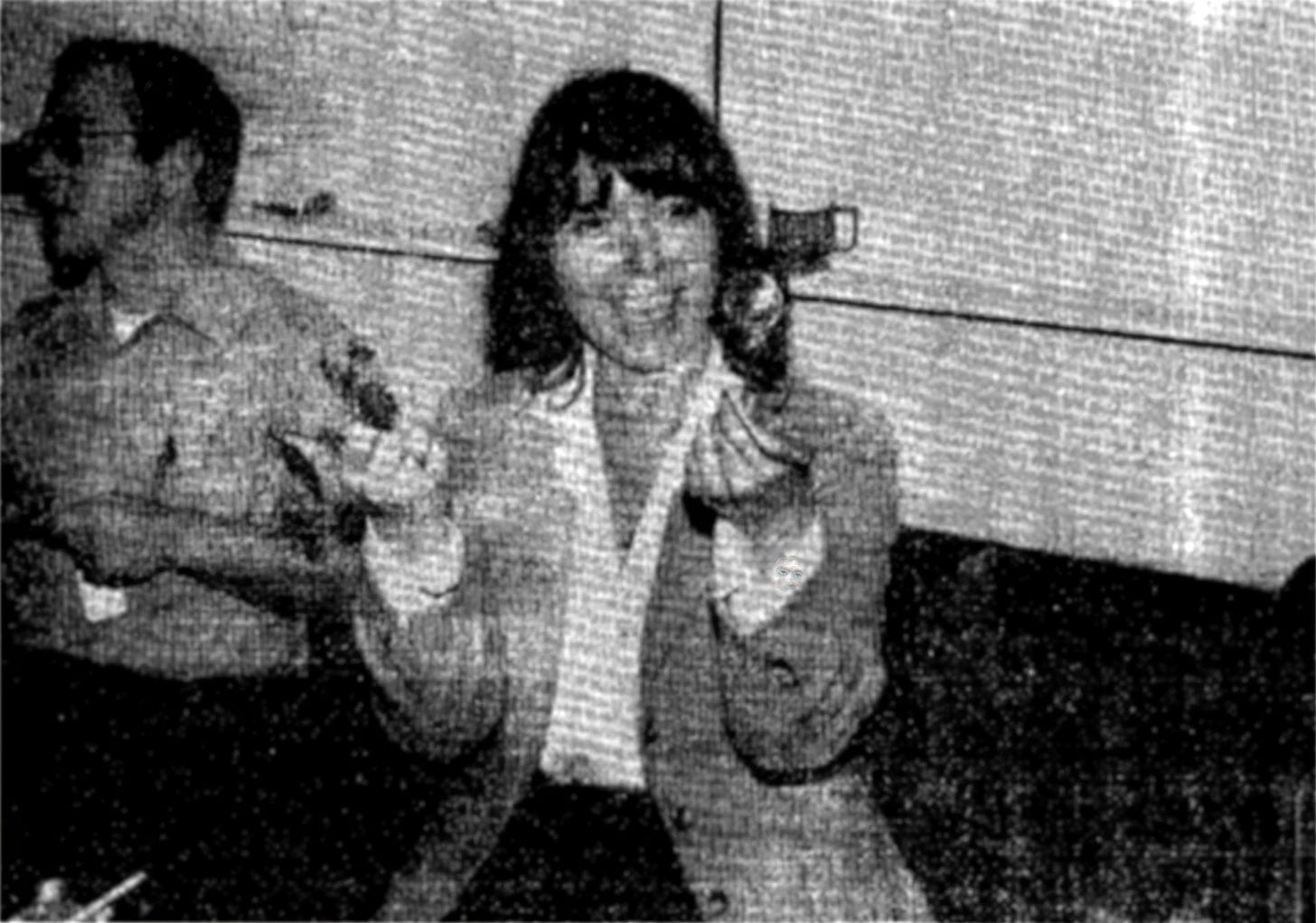

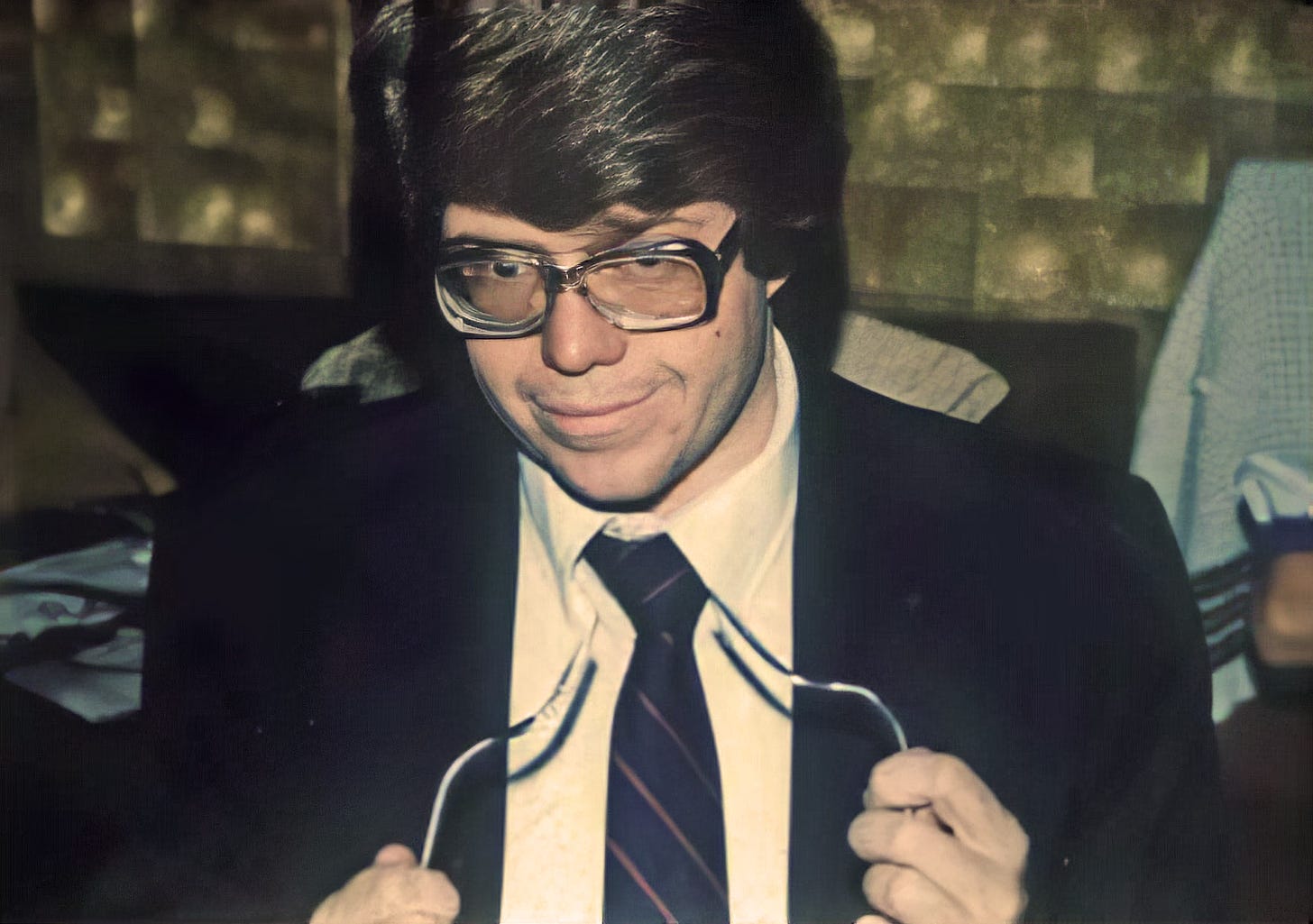

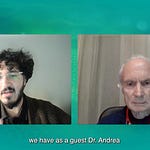
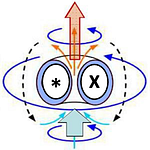
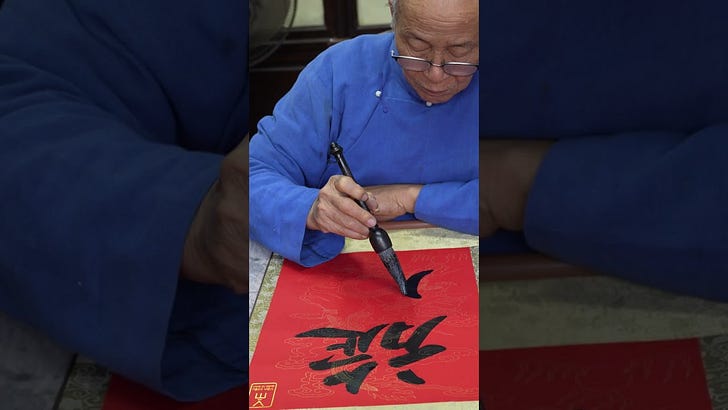
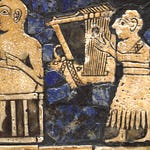




Share this post